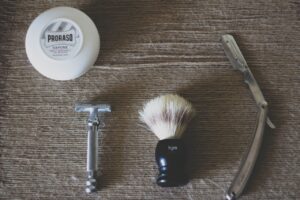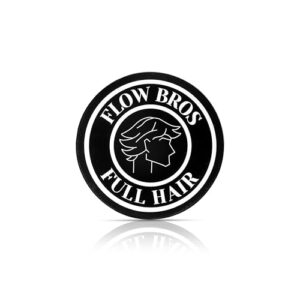Start Smart: Why Guards Make Fading Easy
Using trimmer guards takes the fear out of fades — they give consistent lengths and predictable steps. This guide shows you how to choose sizes, set up, create guidelines, blend with intermediate guards, and finish clean edges so you feel confident.
What You’ll Need
Foolproof Fade Process with StyleCraft Instinct Clipper & Trimmer by Dreclipperhands
Choose and Test Guard Sizes First
Not all guards are created equal — want a foolproof starting point?Identify your clipper’s guard numbers and note the actual lengths they leave — brands vary, so don’t assume a number equals the same length every time.
Try each guard on a small patch of hair or run it over a comb to see the real result before cutting the whole head. Picture a friend asking for a tidy fade; testing first saves awkward fixes later.
Use these quick examples to guide your choice:
Decide the top length and the shortest length for the fade based on those tests — for example, choose a #4 on top blending into a #1 at the sides.
Mark your intended transition zones mentally or with light comb lines so you know where the gradual change should occur.
Set Up Your Station and Protect the Area
Want fewer mistakes? Create a quiet, well-lit mini barbershop at home.Arrange two mirrors so you can see the back of the head. Place one full-length mirror in front and a second hand or wall mirror behind at a slight angle.
Drape a towel or cape around the shoulders to catch hair. Place clips and guards in ascending order within arm’s reach so you don’t fumble mid-fade.
Oil and test the clippers before you start. Run them on a scrap of hair or cloth to confirm smooth operation and listen for unusual vibration.
Comb damp hair to remove tangles, then decide whether you’ll cut dry or slightly damp — cut dry if you want the true fade to reveal immediately. Set a spray bottle nearby if you choose to mist small sections.
Stand behind the subject or sit on an elevated stool for better angles. Keep a hand mirror available for quick checks of the nape and to show the client the back.
Example: set a full-length mirror and a small hand mirror at a 45° angle so you can confidently check the fade without leaning or twisting.
Create the First Guideline with the Longest Guard
Think of the first cut as a map — get this line right and the rest is easy.Attach the longest guard you’ll use for the lower fade zone.
Cut a clean guideline around the head where the shortest-to-mid transition begins.
Work horizontally and evenly, using steady, upward strokes that follow the scalp contour. Move in short, controlled passes rather than long sweeping ones so the line stays consistent.
Keep the guard flat against the scalp and slightly tilt the clipper when you need to follow a curve; treat this pass like drawing a level horizon around the head.
Mark the fade height now depending on your goal: low (just above the ear), mid (around the midpoint of the side), or high (near the temple/crown junction). For example, a low fade guideline sits close to the natural hairline, while a mid fade sits visibly higher on the side.
Confirm:
Take time here — an even guide means less blending later.
Blend Upwards with Intermediate Guards and Lever Control
Want a seamless fade? Master gradual steps and tiny lever tweaks.Switch to the next longer guard and cut slightly above the guideline using quick flicking motions to soften the line.
Cut in short, controlled passes and keep the clipper moving to avoid creating a new harsh edge.
Gradually move through intermediate guard sizes, raising the clipper angle a little with each step so the cut gets longer as you go up.
Use the clipper’s adjustable lever to nudge lengths between two guards—open the lever slightly for a longer result, close it for a shorter result.
Comb often to check the transition and use short, overlapping strokes to blend evenly.
Try: when moving from a #1 to a #2, flip the lever halfway or use a #1.5 motion to get a smoother shift.
Picture a low fade on a friend’s head: alternate guards, comb out and reassess every few passes to spot lines early.
Use the clipper-over-comb technique or a blending guard for stubborn lines.
Work symmetrically: compare both sides and adjust until the transition looks smooth from every angle.
Finish with Detail Work and Clean Edges
Small touches make it look pro — who knew a trimmer could do so much?Remove guards and use the trimmer to clean the hairline around the neck and ears. Use short, steady strokes and keep the skin taut—pull the ear forward to reach behind it and tilt the head down for the neck line.
Soften any remaining harsh lines by switching to a longer guard or by holding the clipper at an angle and lightly grazing the line with upward flicks. For example, if a #1-to-#2 transition looks sharp, attach a #2 or open the lever halfway and blend with quick flicks.
Use scissors to trim stray top hairs and blend the top into the sides with point-cutting or a comb-over: lift small sections, snip vertically into the ends, and re-comb to check.
Check balance in multiple mirrors and in natural light—step back and view from left, right, and above.
Finish with a quick neck cleanup, brush off loose hair, and oil the clippers.
Practice and Patience Pay Off
Practice and patience turn awkward attempts into smooth fades; keep sessions short, review mistakes, and gradually increase complexity. Regular repetition builds speed, control, and confidence — soon you’ll produce clean, consistent fades using trimmer guards. Ready to try another fade today?












Great guide — I wish I’d read this when I first tried fading my partner’s hair!
I really like the step about testing guard sizes first. Saved me from one awful uneven patch.
Tip for beginners: mark your station with tape so you always grab the right guard — life changer.
Also the lever control section is clutch; small changes make a big difference when blending upward.
Defintely practice on a small area before doing the whole head. Patience pays off.
Thanks Maya — glad it helped! Good call on the tape idea, I’ll add that to the station setup tips in the next update.
Totally agree on the tape trick. I also put all guards in order on a towel so they don’t roll away 😂
Been there — patience + testing guards = fewer emergency trips to the barber 😅
Loved the friendly tone — made me less intimidated to try fading at home. Thanks! 😊
Quick question: when you say ‘lever control’ — is that the open/closed lever on the trimmer or something else? Kinda new to the terminology.
Yes — it’s the adjustable lever on the clipper. Closed (or down) gives a shorter cut; open (or up) blends softer. Move it gradually while flicking slightly for a smooth transition.
When in doubt, start closed and open a bit as you go. Easier to take more off than to put it back on 😉
Oh man I tried this on my roommate last weekend and turned his fade into what can only be described as a ‘modern mullet’ (long story). 😂
Lessons learned: 1) Don’t jump to the shortest guard, 2) clean the neckline after every pass, 3) use the mirror to check angles.
I followed the guide’s ‘create the first guideline with the longest guard’ tip and that actually saved it halfway through.
Still, the detail work took me forever — those tiny little hairs at the ears are a nightmare.
If anyone’s got quick tips for doing edges on someone who won’t sit still, send them my way!
Ear edges: tuck a finger behind the ear to pull the skin slightly and give yourself a flat surface — huge difference.
I once bribed my buddy with pizza mid-cut. He sat still like a statue afterwards. 😂 But seriously, a quick mirror check helps them see progress and cooperate.
If the person moves a lot, do short 1–2 second cuts and communicate what you’re about to do. ‘Last snip, then done’ works wonders lol.
Also try trimming the neckline last and use a soft brush to clear hair frequently so you can see what you’re doing.
Hahaha modern mullet — I feel that. For wiggly clients try using distraction (a show on a phone) and short, confident passes. Also, stabilize the head with your free hand when doing edges.
Useful guide. Nothing revolutionary but it’s concise and beginner-friendly.
One minor gripe: I wish there was a small troubleshooting section for common mistakes (ghost lines, over-blending).
Good point — I’ll add a troubleshooting mini-section for ghost lines and quick fixes in the next revision. Thanks for the feedback!
Solid step-by-step. Couple things I thought could be added:
– A simple guard-length chart (mm to visual guide) would help newbies pick sizes faster.
– A short checklist for station setup (mirror angle, towels, plug nearby) so you don’t forget anything.
Also, shoutout for reminding folks to clean the area — hair everywhere otherwise. 🙂
For the guard chart: #1 = 3mm, #2 = 6mm, #3 = 10mm roughly — you’ll want to test on hair though since brands vary.
Thanks Ethan — guard chart and station checklist are great suggestions. I’ll work them into the guide and try to add a quick printable checklist.
Video demos for each step would be clutch. Sometimes a pic or vid beats text for learning the flicking/blending motion.
Agree on the checklist. I once forgot to charge my clippers mid-fade…not fun.